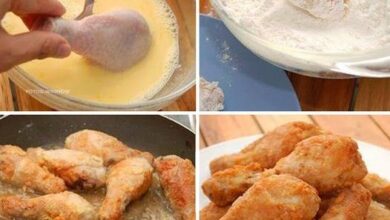Pasta Salad with Deviled Eggs

Deviled Egg Pasta Salad is a delicious and creative variation of traditional pasta salad, featuring the beloved flavors of deviled eggs. This creamy and tangy salad combines cooked pasta, hard-boiled eggs, and a savory dressing for a delightful side dish or light meal. In this article, we’ll share the Deviled Egg Pasta Salad recipe along with a table sheet format listing all the ingredients required.
ADVERTISEMENT
Ingredients:
Below is a table sheet outlining all the ingredients needed to make this scrumptious Deviled Egg Pasta Salad:
ADVERTISEMENT
| Ingredients | Quantity |
|---|---|
| Elbow Macaroni Pasta | 8 oz |
| Hard-Boiled Eggs | 6 |
| Mayonnaise | 1/2 cup |
| Dijon Mustard | 2 tbsp |
| Sweet Pickle Relish | 2 tbsp |
| Apple Cider Vinegar | 1 tbsp |
| Paprika | 1 tsp |
| Salt and Pepper | To taste |
| Celery (finely chopped) | 1 stalk |
| Green Onions (sliced) | 3 |
| Fresh Parsley (chopped) | For garnish |
Instructions:
1. Cooking the Pasta
Cook the elbow macaroni pasta according to the package instructions until it’s al dente. Drain the pasta and set it aside to cool.
ADVERTISEMENT
2. Preparing the Deviled Egg Dressing
In a mixing bowl, combine mayonnaise, Dijon mustard, sweet pickle relish, apple cider vinegar, paprika, salt, and pepper. Whisk the ingredients together until you have a smooth and creamy dressing.
3. Assembling the Salad
Peel and chop the hard-boiled eggs, reserving a couple for garnish. In a large mixing bowl, add the cooked and cooled pasta, chopped hard-boiled eggs, finely chopped celery, and sliced green onions.
4. Mixing the Salad
Pour the deviled egg dressing over the pasta and egg mixture, gently tossing everything together until well coated.
5. Chilling the Salad
Cover the Deviled Egg Pasta Salad and refrigerate it for at least 1-2 hours to allow the flavors to meld and the salad to chill.
6. Garnishing the Salad
Before serving, garnish the pasta salad with the reserved hard-boiled eggs, sliced into halves or quarters, and freshly chopped parsley for a burst of color and added freshness.




